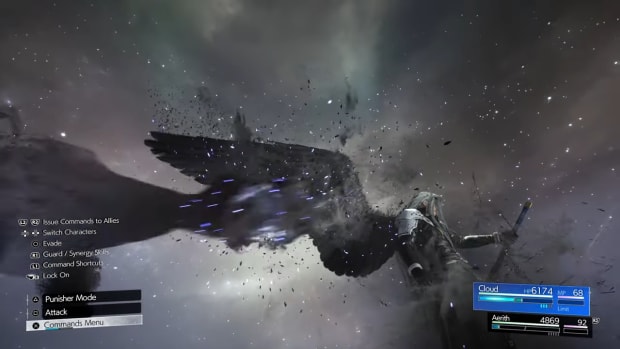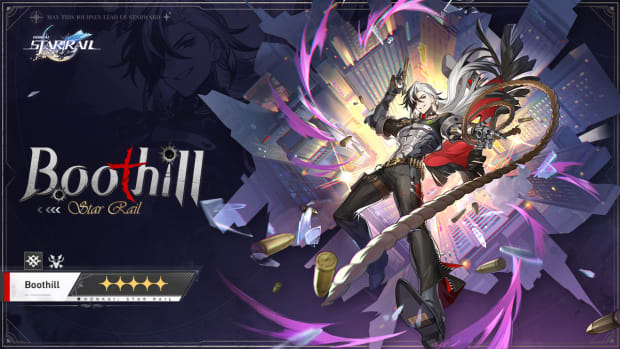Octopath Traveler 2 moves forward while staying true to the original's ideas
The original Octopath Traveler was a revelation to me. Before it, I’d always side-eyed JRPGs to some extent. I played Pokémon, sure, but I didn’t understand what made the genre special for a long time. It was Octopath’s unique visual and storytelling style that wore me down enough to leap head-first into the genre that is now my unrivaled favorite.
Persona, Fire Emblem, Xenoblade – I never would’ve given them the time of day if Octopath hadn’t opened my eyes to the true beauty of JRPGs, so it always holds a special place in my heart.
Safe to say, I was very excited when Octopath Traveler 2 was announced, but it had a lot to live up to. Creating eight new stories that don’t retread the same ground while retaining all of the charm and character depth of the first was no easy task, but thankfully this sequel adapts to those challenges, mixing it up just enough to feel fresh while still undoubtedly being Octopath.
There’s more confidence in the narratives this time around because a strict structure doesn’t bind them. The first game’s 4-chapter formula doesn’t apply to everyone this time. If a character’s story needs more time to be fleshed out, then they can have more chapters, or they can have two parallel storylines that eventually come together – it doesn’t all have to follow the same structure.
That confidence pays off as the stories play out in a much more satisfying way this time around. Everything feels like it gets much more time to breathe, which makes each individual chapter along the way more enjoyable. The protagonists are always moving forward with a purpose, they don’t just show up in a town and wait for some crisis to sweep them up – in fact, sometimes there is no crisis at all and the chapter consists of only story cutscenes and exploration.
The plot writing is still a little heavy-handed, and there’s an annoying overuse of flashbacks in almost every story, but when you’ve got eight different plots that you can bounce between as you please, nuance and subtlety won’t stick in your mind as easily as over-the-top plotting will. Plus, a fairly mediocre plot can easily be raised up by the great character writing that makes these games what they are.
It has something for everyone too. If you want a gritty revenge tale then Osvald will be who you want, if you want an epic adventure into myth then go for Ochette, or if you want a heartwarming tale of an innocent girl trying to bring joy to a depressed world, Agnea is the protagonist for you. Just like the first game, everyone gets a chance to shine and every story is memorable. You’re bound to have a least favorite, but no one is boring or forgotten.
This is aided by the new Crossed Paths chapters, which see a pair of characters team up for a short story. These typically consist of two chapters and end in a boss fight – essentially making them fun little sidequests that flesh out each character. It’s really interesting to see them take a major role outside of their main story for a change, and it lets us explore their personalities from a new angle. It’s something people were upset the first game didn’t have, and it’s the perfect addition for this sequel.
Speaking of great additions, there is a proper final chapter now that only unlocks once you’ve completed all eight stories. I shan’t spoil the details, but it’s more than just a boss fight this time and is a worthy conclusion.
That said, the one place I felt the stories were let down compared to the first game was the voice acting. None of it is outright bad, but there are a few characters that really sleepwalk through their lines. As engaging as her story is, I found Castti’s vocal performance to be lacking any energy, and several other side characters let it down too. There are plenty of other performances that contain the same joyous energy that the first game’s protagonists did – Ochette and Partitio are particular standouts, but there’s not the same level of consistency here.

The battle system will be very familiar to fans of the first game, with some refinements and additions.
If you want consistency, just look at the gameplay. The overworld environments are much more interesting this time out. They’re roughly the same size, but have far more layers that make finding hidden chests and secret dungeons all the more enjoyable, and the towns and cities you visit and bigger and livelier than ever. You really get a sense of a growing world that keeps expanding.
With the day/night cycle, you can get a sense of townsfolk going about their daily routines before returning home or visiting the tavern at night. If you’re out in the wild, enemies will become tougher at night, meaning you can challenge yourself whenever you want and get greater rewards for doing so.
The combat system is as robust as ever, and the new Latent Powers are a great addition. These are unique to each traveler that can only be used when a gauge is filled by breaking opponents or taking damage. When activated, it might allow that character to act twice in a turn, let their single-target abilities target all, or break shields regardless of the opponent’s weaknesses.
They don’t turn the combat system on its head, but they don’t need to, they’re a nice extra layer of strategy in an already great system that can make you extremely powerful if you master it.
Speaking of mastering the system, the base jobs have been reworked this time around. There are many abilities you’ll recognize from the first game, but some have been switched out for new ones. There is a much greater focus on each job having a specific purpose in battle. Hunter is about spending a few turns setting up one decisive strike, Thief is about slowly wearing the opponent down, Dancer is about enhancing everyone else’s abilities.
These roles existed before, but often their abilities didn’t complement their playstyles. For example, Thief didn’t have enough attacking abilities, making it seem more like a support job, but now it has a better mix. Plus, the new attacks clearly signpost what you should be prioritizing, like Surprise Attack, which does more damage the earlier that character acts in the turn order.
Then there are the secret advanced jobs. Without spoiling what they are, I can say they’re better than the first game’s secret jobs. They have unique purposes this time around and cool gimmicks that make them stand out from the crowd, rather than simply being superior versions of the base jobs.
I also couldn’t go without mentioning Yasunori Nishiki’s incredible soundtrack. The character themes, the battle themes, and the overworld themes are pitch-perfect. The essence of every aspect of this world is conveyed beautifully through music, and it stands up to what was already an all-time great soundtrack from the original.
If you loved the original game, then Octopath Traveler 2 is exactly the sequel you were hoping for, but at the same time, if you thought the original fell a bit short, this is the game you wanted the first time around.
None of the greatness from the first game was lost in either the writing or the gameplay, and although the new additions aren’t mindblowing, they add up to make a much improved overall experience. This series’ unique approach to storytelling and masterful turn-based combat system shines brighter than ever, and it’s sure to cement itself in the memories of JRPG fans for a long time.
Score: 9/10
Version tested: Nintendo Switch






